Are You Gearing Up for a Drive Through Portland, Oregon?
Whether you’re a local or a visitor, familiarize yourself with the unique driving rules and conditions of the city to ensure a safe and stress-free journey.
Portland’s reputation for being a bicycle-friendly and pedestrian-oriented city means that drivers must prioritize the safety of these road users at all times, even in the absence of marked crosswalks. Especially with the city’s crazy weather and ongoing construction projects, it’s a challenge worth mastering.
Prepare to embark on a journey through Portland’s diverse neighborhoods and picturesque landscapes, with all the knowledge and expertise you need to navigate its roads safely and seamlessly.
From understanding the local right of way to tips for navigating through the rainy weather, here’s your comprehensive guide to driving safely in Portland.

Portland’s Driving Rules
Driving in Portland entails adhering to a set of rules and regulations designed to prioritize the safety and well-being of everyone on the road.
1. Yielding To Pedestrians
Portland operates under the principle that drivers must yield to pedestrians at all times, irrespective of marked crosswalks.
This means exercising heightened caution, especially in densely populated areas and near schools, where pedestrian traffic is particularly prevalent.
2. Mandatory Signaling
Signaling isn’t just a courtesy in Portland; it’s a legal requirement. Drivers must signal their intentions—whether it’s a turn or a lane change—at least 100 feet before executing the maneuver. [1]
This proactive approach to signaling not only fosters smoother traffic flow but also enhances safety by providing ample warning to other drivers and pedestrians.
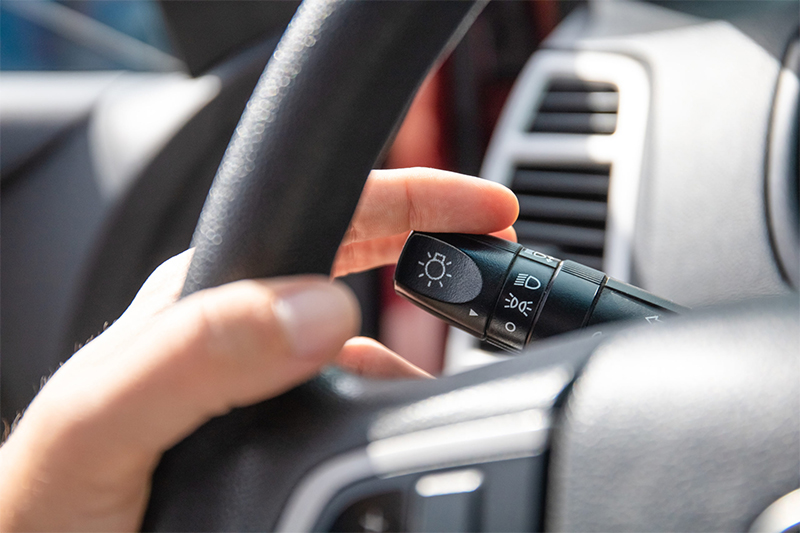
3. Keeping Headlights On
Another hallmark of Portland’s driving culture is the mandatory use of headlights from sunset to sunrise. While this may seem like common sense during periods of low visibility or inclement weather, Portland’s regulations make it a legal obligation regardless of weather conditions.
This emphasis on visibility underscores the city’s commitment to enhancing safety, particularly during twilight hours when visibility is compromised.
4. No Handheld Devices
Portland takes a firm stance against distracted driving, particularly the use of cell phones behind the wheel. While some states may have lax regulations regarding cell phone use while driving, Portland prohibits all handheld device usage, unless it’s a hands-free device.
This stringent approach aims to mitigate the risk of accidents caused by driver distraction, thereby fostering a safer driving environment for everyone on the road.
By familiarizing yourself with these fundamental driving rules, you’ll not only stay on the right side of the law but also contribute to a culture of safety and mutual respect on the roads of the City of Roses.
Speed Limits in Portland
Navigating Portland requires a keen understanding of the city’s speed limits, which vary depending on the type of road and the surrounding environment.
Whether you find yourself cruising through residential neighborhoods, urban highways, or school zones, you must adhere to the designated speed limits.
1. Speeding Ticket Fine in Portland
The cost of a speeding ticket in Portland varies depending on factors such as the location of the violation and the speed at which the driver was traveling.
Generally, fines for speeding violations range from $115 to $225, with higher penalties for speeding in school or construction zones. Drivers caught traveling over 30 mph above the speed limit may face a presumptive fine of $440 and potential license suspension. [2]
2. Speed Limit For Residential Areas
In residential areas, where pedestrians and children are often present, the speed limit typically hovers around 20 mph. This reduced speed not only enhances safety but also fosters a sense of community and tranquility in residential neighborhoods.
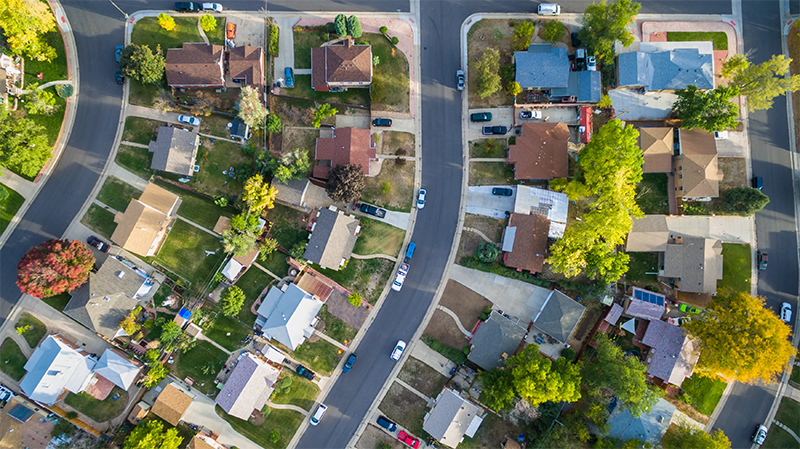
3. Speed Limit For Highways
When traversing urban highways, such as Interstate 5 or Interstate 84, drivers can expect to encounter higher speed limits ranging from 55 to 65 mph, depending on specific stretches of the roadway. These elevated speeds reflect the faster pace of travel inherent in urban environments, where commuters and travelers seek efficient routes to their destinations.
4. Speed Limit For School Zones
School zones, characterized by their proximity to educational institutions, require special attention from drivers. To safeguard the well-being of students and school staff, speed limits are typically reduced to 20 mph in these areas during designated school hours. This ensures that drivers exercise caution and vigilance, especially when children are present near school grounds.
5. Speed Limit For Business Districts
In business districts, where pedestrian activity is often heightened, speed limits may range from 20 to 25 mph to accommodate the flow of foot traffic and ensure pedestrian safety. These lower speed limits encourage drivers to proceed with caution and remain attentive to their surroundings, thereby reducing the risk of accidents in busy commercial areas.
Remember, speed limits are in place not just to regulate traffic but also to protect the lives and well-being of everyone who calls Portland home.

Toll Roads in and Around Portland
As you embark on your journey through Portland, it is best to be aware of any toll roads that may impact your route. While there are currently no toll roads within the city limits or its surrounding areas, changes may be on the horizon.
The Oregon Department of Transportation (ODOT) has proposed plans to implement tolling on Interstates 5 and 205 in the Portland metropolitan area. [3]
This initiative aims to alleviate congestion, fund transportation projects, and promote alternative modes of transportation, such as public transit.
For drivers traversing the Portland area in the future, stay informed about developments regarding toll roads and plan your routes accordingly. While toll roads can provide a source of funding for much-needed transportation projects, they may also impact travel costs and route choices for drivers.
As Portland continues to evolve and grow, so too will its transportation infrastructure. By embracing these changes and adapting to new tolling systems, drivers can contribute to a more sustainable and efficient transportation network.
Quick Driving Tips for Portland
Navigating Portland’s lively streets requires a combination of skill, awareness, and local knowledge. These quick driving tips will help you navigate Portland’s roads with confidence and ease.
1. Avoid Rush Hour:
Portland’s rush hour typically occurs between 7 am to 9 am and 4 pm to 6 pm, when traffic congestion is at its peak. To minimize delays and frustration, plan your drives outside of these peak hours whenever possible.
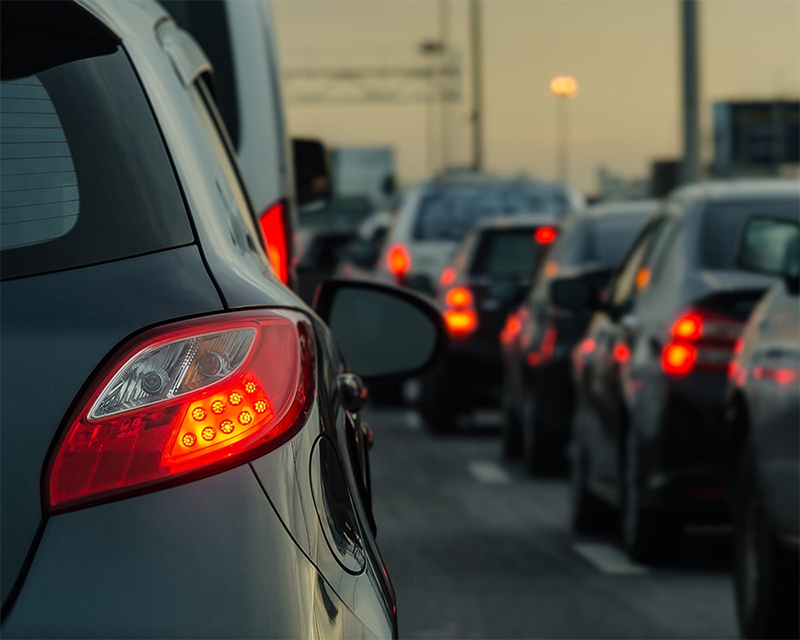
2. Utilize Left Turns on Red:
In downtown Portland, drivers are permitted to make left turns at a red light from a one-way street onto another one-way street, unless otherwise indicated by signage. This unique rule can help you navigate through downtown traffic more efficiently and save time during your commute.
However, always exercise caution and yield to pedestrians and oncoming traffic before making any turns.
3. Mind the Downtown Speed Limit:
When driving in downtown Portland, be mindful of the lower speed limit, which is typically set at 20 mph. This reduced speed helps ensure the safety of pedestrians, cyclists, and others in the busy city center.
Stay alert, obey the speed limit, and watch for changes in traffic patterns to navigate downtown streets safely.
4. Respect Bicyclists:
Portland is renowned for its bike-friendly culture, with dedicated bike lanes and a high prevalence of cyclists on the roads. Share the road responsibly and give cyclists ample space when passing or turning.
Remember that bicycles are allowed to treat stop signs as yield signs in Portland, so anticipate their movements and exercise patience when sharing the road.
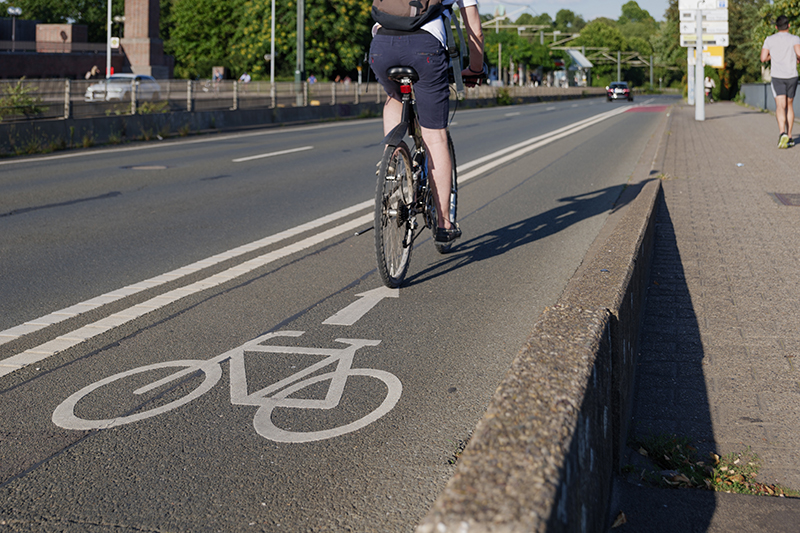
5. Utilize Public Charging Stations:
If you’re driving an electric vehicle (EV) in Portland, take advantage of the city’s extensive network of public charging stations. With nearly 1,600 charging stations available from seven charging networks, joining a network can make charging on the go easier and more convenient.
Plan your routes to include stops at charging stations to ensure you have sufficient power for your journey.
6. Stay Informed with Real-Time Traffic Updates:
To save time and avoid traffic congestion, utilize resources like the TripCheck website, Facebook, and Twitter to check real-time traffic conditions.
These platforms provide valuable information on congestion, travel times, and custom camera views, allowing you to plan alternate routes and make informed decisions while on the road.
Be Prepared for Inclement Weather
Portland’s weather can be unpredictable, with rain and fog common during certain times of the year. Be prepared for wet and slippery road conditions by ensuring your vehicle’s windshield wipers, headlights, and tires are in good working condition.
According to the Federal Highway Administration, wet roads are responsible for more than half of weather-related car accidents annually [4], emphasizing the need for caution in rainy weather. Some hazards to watch out for include:
- Poor Visibility: Fog and mist reduce visibility, making it challenging to see other vehicles, pedestrians, and road hazards. Glare from headlights and streetlights can further impair visibility, particularly at night.
- Decreased Tire Traction: Rainwater on the road surface reduces tire traction, increasing the risk of skidding and hydroplaning. Even light rain can make roads slippery, especially during the initial stages of precipitation.
- Increased Braking Distance: Wet roads require longer braking distances due to reduced tire grip. Drivers may need to apply brakes earlier and more gently to avoid skidding or rear-end collisions in heavy traffic.
- Obstacles on the Road: Rainy weather can lead to an increase in obstacles on the road, such as standing water, debris, and fallen branches. Drivers must remain vigilant and prepared to navigate around these hazards safely.
To minimize the risk of a car crash and ensure your safety while driving in rainy and foggy weather, follow these essential tips:
- Dim Dashboard Lights: Reduce dashboard glare to improve visibility, especially in foggy conditions. Dimming interior lights can help prevent distractions and enhance your ability to see the road ahead.
- Avoid High Beams: In foggy conditions, high beams can reflect off water droplets and create glare, reducing visibility for both you and other drivers. Stick to low beams and use fog lights if your vehicle is equipped with them.
- Maintain Safe Following Distance: Increase your following distance to allow for longer braking distances on wet roads. Keep a safe distance from the vehicle in front of you to avoid rear-end collisions and allow for better reaction time.
- Reduce Speed: Slow down and drive at a safe speed suitable for the road conditions. Driving too fast in rainy weather increases the risk of hydroplaning and losing control of your vehicle. Adjust your speed to match the flow of traffic and road conditions.
- Steer Smoothly: If you encounter standing water or hydroplane, avoid sudden steering inputs or braking. Instead, steer gently in the direction you want to go and gradually ease off the accelerator until you regain traction.
Whether you’re commuting to work, running errands, or exploring the city’s attractions, safe and responsible driving practices contribute to a positive and enjoyable experience on Portland’s streets.
Buckle up, stay alert, and embrace the journey ahead as you explore all that Portland has to offer.
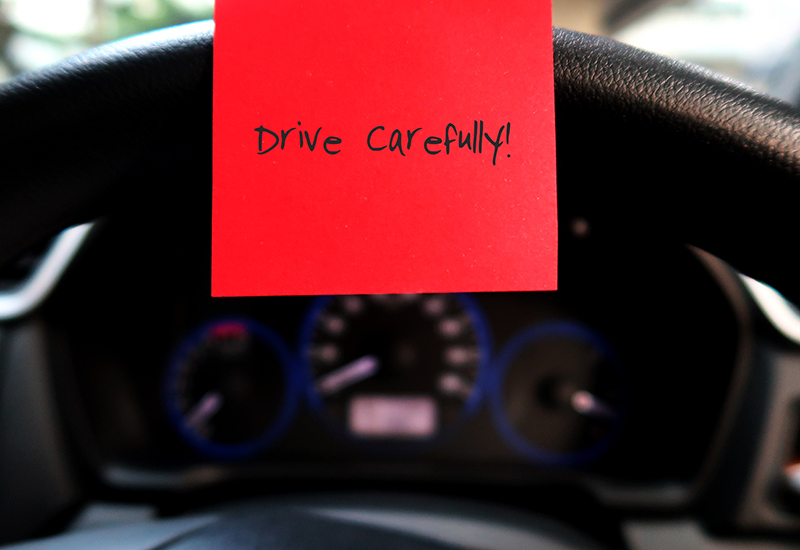
Don’t Let Road Troubles Derail You.
Have you been injured in a Portland car accident? Reach out to our car accident lawyers at Goldberg & Loren. You may be eligible for compensation. Call us at (971) 339-8080 for a free consultation.
Sources:
[1] Oregon Drivers Manuel 2022-2023. (2023, January 9). Driver and Motor Vehicle Services. Retrieved April 25, 2024, from https://www.oregon.gov/odot/forms/dmv/37.pdf
[2] Martin, S. (2024, January 19). How a speeding ticket impacts your insurance in Oregon. Bankrate Press. https://www.bankrate.com/insurance/car/speeding-ticket-oregon
[3] Oregon Department of Transportation : Oregon Toll Program : Oregon Tolling : State of Oregon. (n.d.). Oregon Toll Program : Oregon Department of Transportation. https://www.oregon.gov/odot/tolling/pages/default.aspx
[4] How Do Weather Events Impact Roads? – FHWA Road Weather Management. (n.d.). https://ops.fhwa.dot.gov/weather/q1_roadimpact.htm

